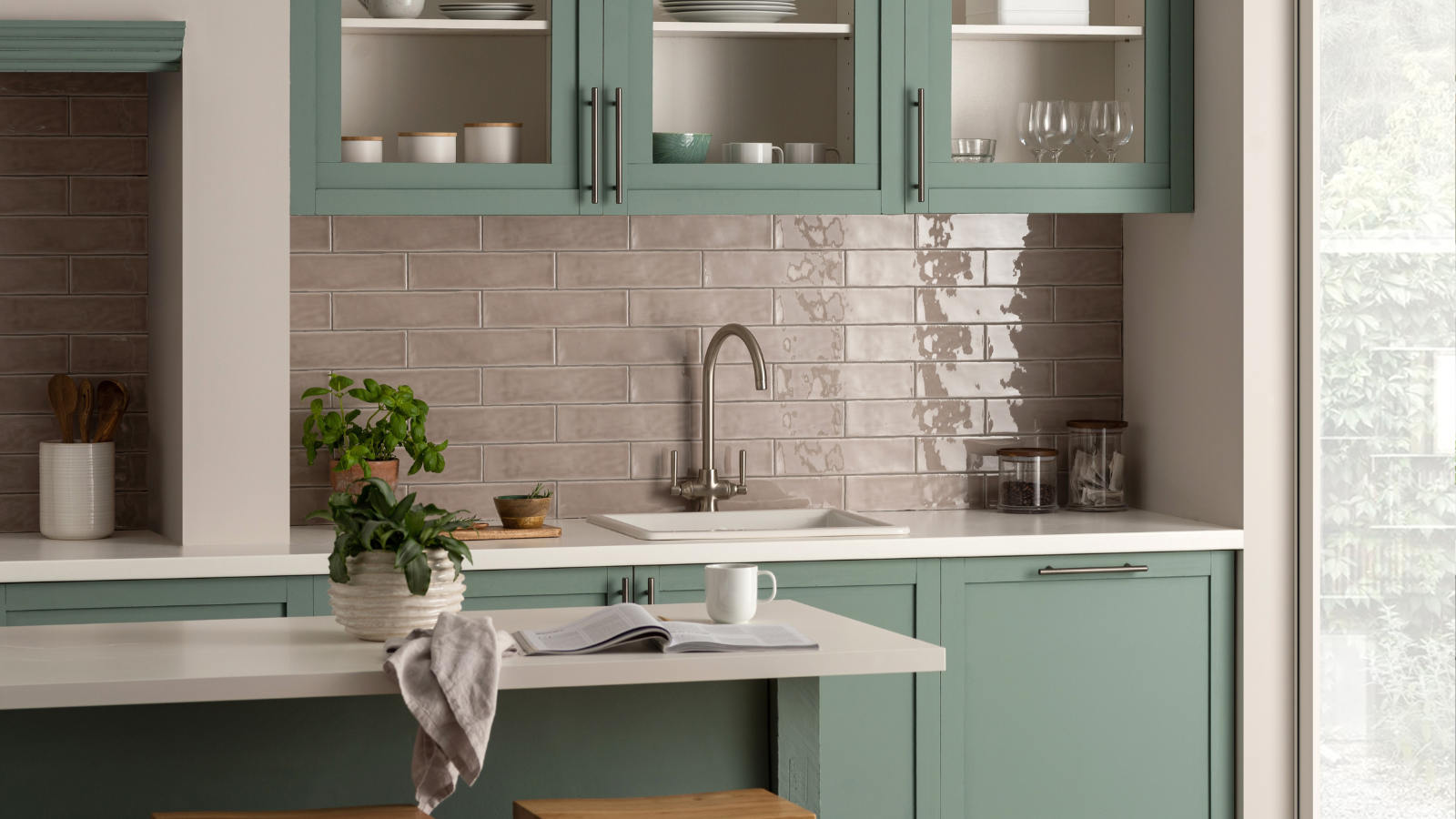How to Find a Self Build Plot in a Rural Area
How to find a self build plot in a rural area that will pass planning becomes easier if you know what's important under national and local policy. And sustainable development is right up there

How to find a self build plot in a rural area that will pass planning is all about knowing policy framework.
The majority of custom and self builders understandably want to build their home in an attractive location, with many looking for a quiet, rural setting. However, as anybody who has tried to find a suitable building plot in England will know, rural self build opportunities are usually few and far between.
There are two main reasons for this. Firstly, is the concept of sustainable development, and secondly, is the desire of local authorities to direct new development to existing built up areas, preserving the open countryside where possible and preventing urban sprawl.
In order to fully understand why building a home in a very rural location is
far from straightforward under the planning system in England, you need to appreciate the importance that the concept of sustainable development plays in national and local policy.
(MORE: Secrets to Planning Success)
The Importance of Building a Sustainable Home
The primary planning policy document for England is the National Planning
Policy Framework (NPPF), which sets out government’s planning policies for England and how these are expected to be applied.
The NPPF offers guidance to Local Planning Authorities in two main areas – plan-making and decision-taking. Local Plans, drawn up by councils around England, must be complaint with the provisions set out in the NPPF, as must proposals contained within planning applications. If a Local Plan is deemed not to be compliant with the NPPF, it will not pass examination. And if a planning application is deemed to be inconsistent with the NPPF, it must be refused.
Bring your dream home to life with expert advice, how to guides and design inspiration. Sign up for our newsletter and get two free tickets to a Homebuilding & Renovating Show near you.
As the NPPF sets out early on, in Paragraph 7, the purpose of the planning system now is to ‘contribute to the achievement of sustainable development’, where sustainable development is defined as ‘meeting the needs of the present without compromising the ability of future generations to meet their own needs’. Sustainable development is achieved via three main objectives – social, economic and environmental.
(MORE: How to Get Your Plans Approved)
Access to Amenities is Key
Access to amenities like schools and shops is the primary reason why sites located in the open countryside, and not within an existing town or village, are normally very unlikely to be approved for planning permission for a new home.
Small-scale development normally has a very minor impact socially and economically, so self and custom builds normally impact sustainable development via the environmental objective. These environmental impacts relate to access to services and amenities, and how good access to these can reduce car travel, and therefore emissions. Services and amenities normally refer to shops, schools, employment and health care provisions.
As such, the NPPF requires that all new development be situated in sustainable locations in order that car travel and emissions are reduced. Access to these facilities is also considered in terms of the ability of future residents of a property to utilise them without being reliant on a private car. It means facilities must either be within walking and cycling distance, which is normally considered to be circa 800m (although this may vary in very rural authorities), or accessible by public transport. A site may therefore be significantly more than 800m from the nearest services and amenities, but by virtue of being located close to a bus stop with a regular service, may be considered sustainable.
An easy way to determine whether a site is sustainable is to consider whether you could live there without a car and still go to work, get the kids to school, do the weekly shop etc. If that wouldn’t be possible, then the site is likely to be considered unsustainable.
Local Policy is Key
In addition to sustainability, local policy is key to finding a rural plot you will be able to develop. Almost all Local Plans in England have a policy that directs new development to existing settlements, and usually only those with a reasonable provision of services and amenities. This is partly to comply with Paragraph 79 of the NPPF, which states that ‘planning policies and decisions should avoid the development of isolated homes in the countryside’, but also to ensure that development is consolidated as far as possible in urban areas and that the countryside is not unnecessarily eroded.
As such, it is not enough for a site to be sustainable – a prospective self build site should also comply with local policy and that usually requires a site to be within, or very well-related to, an existing settlement.
Exceptions to the Rule: Paragraph 79
There are, however, certain exceptions to the rule and circumstances in which a new home in the open countryside can be considered acceptable. Paragraph 79 does contain some exceptions to the ban on isolated homes in the open countryside.
Homes for rural workers can be permissible, where it can be demonstrated there is a need. Proposals which would have a positive effect on a valuable heritage asset may be considered acceptable, as may the proposals for the re-use of redundant or disused buildings, which would have a positive impact upon their immediate locality. Subdivision of existing homes can be supported.
Lastly, proposals that are of ‘exceptional quality’ in terms of design in that they are ‘truly outstanding or innovative, reflecting the highest standards in architecture’ and would ‘significantly enhance its immediate setting’, can also be permitted. Applications founded on their exceptional architectural quality can cost an awful lot of money to put together, though, and are reliant on very subjective decision- making, which means they have a low success rate.
Some LPAs encourage or permit the conversion of rural buildings to dwellings. Such proposals can be outside of settlement boundaries, but would normally need to be sustainable. If the existing building is one that already generates traffic, then it can sometimes be argued that the proposed residential use will be no less sustainable than the existing use.
Previously Developed Land: Brownfield Plots
The use of previously developed (brownfield) land is encouraged by the NPPF and local planning policy documents, and, as such, it can be easier to gain permission for a site outside a settlement boundary if the land is brownfield. Again, it would normally need to be demonstrated that the site is in a sustainable location.
Alternatively, there are occasions where an ‘infill’ policy supports limited development in rural locations, and a self-build home may be achievable in these instances. The subdivision of a larger plot – splitting off some unwanted garden land – is another route, however, this normally needs to have road frontage and for the site not to be configured in such a way that it creates ‘tandem’ (or ‘backland’) development – i.e. leading to a dwelling behind the existing dwelling. This is often seen as creating an adverse impact on the host property, as well as being contrary to the prevailing pattern and grain of the area. Indeed, many Local Plans include policies that resist this type of development.
There are instances where a planning case can be made for development
of land that touches a settlement boundary, and where sustainability can be demonstrated, despite the site technically being outside the settlement boundary. A site that is very well-related to an existing settlement may arguably have only a minor impact upon the open countryside and will normally be sustainable due to its close relationship to the settlement. But each case is based upon its merits and this is now always applicable.
There’s no denying that finding a custom or self build opportunity in the countryside is difficult, but for those seeking an appropriate site, those on the edge of existing towns and villages may often offer an opportunity at achieving that rural self build dream home.
Sally is a chartered town planner and an expert in all things planning permission. She has significant expertise, specialist knowledge and substantial experience when providing professional advice for self builders and custom builders seeking to build their own home and those who wish to refurbish and extend their properties.
She is Managing Director of Foxley Tagg Planning Ltd (which she formed in 2000), Executive Committee Member – National Custom & Self Build Association (NaCSBA) and a Board Member of the Right to Build Taskforce. Sally and her team are a regular presence in The Planning Clinic at the Homebuilding & Renovating Show.

